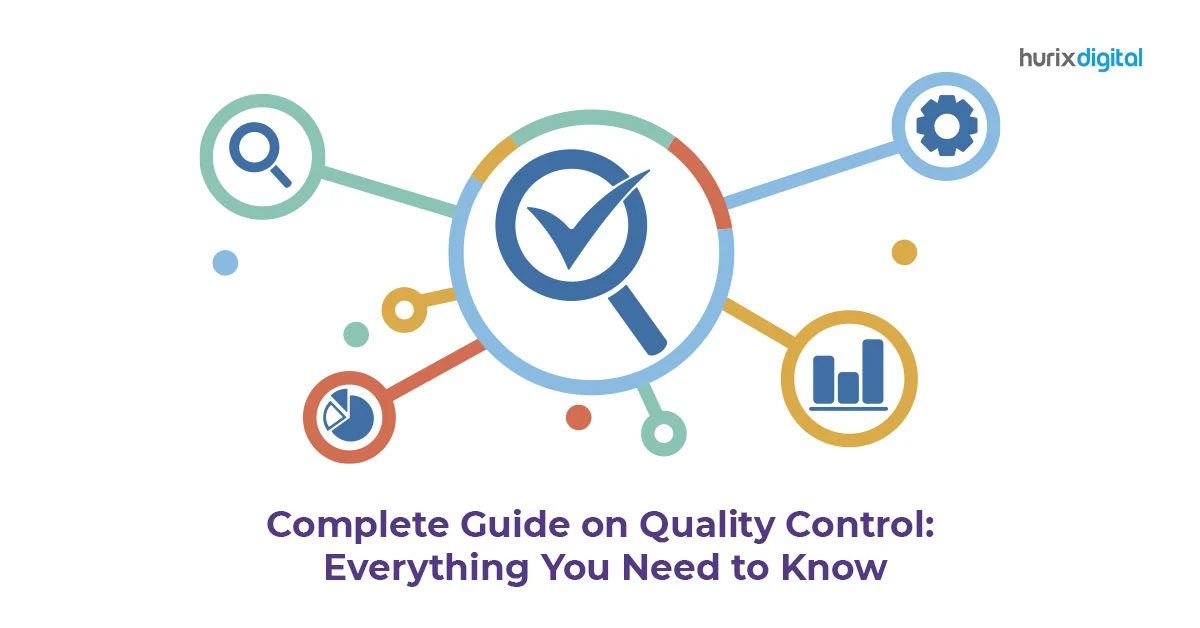Quality is the soul of a successful business. In the current age, where consumers are highly aware and informed about the latest innovations and technologies, a business without a quality product or service is sure to run into rough weather. Quality Control (QC) in this context ensures that the product quality is maintained or improved, emphasizing quality control in business for sustained success.
Depending on the product and the industry, the method of QC could involve testing of units, processes and the finished products to see if they meet the required criteria. Quality Control reduces the cost of production by reducing wastage of resources and by optimizing production capacity.
Also Read: Manuscript Preparation: A Connecting Process Between The Editorial Team And An Editor
Table of Contents:
Software Quality Control
Software quality control is a function or a set of procedures that checks whether a software meets the quality goals and is ‘fit for use’ by the customer. It checks for both functional requirements and non-functional requirements such as usability, supportability, and performance.
What do we do in software quality control?
- Check whether the criteria for the selection of data are documented
- Check if there are transcription errors in data input and reference
- Ensure the integrity of database files
- Undertake consistency-checks for data
- Watch out for uncertainties in database files
- Check that the movement of inventory data in the processing steps is correct
- Undertake review of internal documentation
- Undertake completeness checks
- Compare current results with previous results
Methods of software quality control
There are several methods of quality control in software, including:
- Six Sigma
- Control management tool
- Rome Laboratory software framework
- Goal Question Metric paradigm
- Total software quality control
Verification and validation: They ensure that a software system meets the user’s needs. Verification helps us ensure that we are building the product in the correct way. Whereas validation helps ensure that we are building the right product. Quality control in business is essential for both verification and validation process.
The methods include:
- Independent Verification and Validation (IV&V)
- Requirements Traceability Matrix (RTM)
- Requirements Verification Matrix
- Software Quality Assurance
Testing: It is a significant process for quality control in business. There are several testing methods in software such as unit testing, system testing, functional testing, software performance testing, usability testing, load testing, and regression testing.
Also Read: How does Accessibility Testing Improve your Website Performance?
Point of View:
Creating a New Gold Standard in Quality Assurance
Six Sigma Method
Six Sigma was originally a management method developed by Motorola in 1986 to ensure fewer errors. And now, it is an industry-standard and all the industries are enrolling their employees to be practitioners of Six Sigma.
Six Sigma (sigma=standard deviation) aims at improving cycle-time, bringing down defects to that of not more than 3.4 occurrences per million events. Six Sigma points out that for an error to occur, it would take a six-standard deviation event from the mean. This is due to the fact that only 3.4 out of a million events along a bell curve would occur outside of six-sigma (standard deviation).
Also Read: Top Reasons Why Companies Outsource Quality Assurance Services
Six Sigma and software testing
Six Sigma is the process of producing high-quality output via two phases – identification and elimination of defects. Thus, the method reduces variations in the process and ensures that 99.99966% of all the products have the same features and are free from defects.
Six Sigma methodologies:
There are two methodologies for process improvement: DMAIC and DMADV.
DMAIC project methodology stands for design-measure-analyze-improve-control. It is used to enhance the quality of an existing process. It’s effective for situations requiring quality control in business, ensuring optimal performance.
DMADV which stands for define-measure-analyze-design-verify is applied in situations where the software product or process elements have already been optimized (are not present) but still lack in performance improvement.
Benefits of Quality Control for Businesses
- Ensures the product meets customer expectations: This increases brand loyalty.
- Decrease in variations: With proper QC process in place, variations can be avoided or identified and the problem resolved.
- Effective use of resources: By establishing a quality control system, businesses can reduce the misuse of resources and ensure optimal usage.
- Compliance with industry standards: Businesses with well-defined quality control in business processes can earn accreditations from various regulatory bodies. And, with a software product that complies with the industry standards, businesses can market the products more effectively.
In conclusion
Quality Control in businesses minimize waste and operate at high levels of productivity. At Hurix, we maintain strict quality control procedures to ensure the right level of quality is achieved. Given our extensive domain knowledge in the learning and publishing industries, we specialize in serving clients in these domains. We provide the best-in-class solutions for content quality control.











